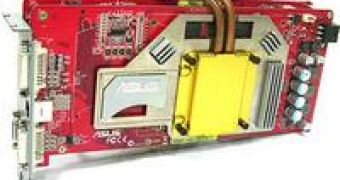As I am an ATI fan, I can hardly wait to see how the X2900 XT cards really behave in today's demanding graphics environment. AMD/ATI may know better why they have delayed the arrival of DX10 cards, but I, for once, was nearly ready to join the dark forces of NVIDIA, with all the annoying market strategies and technical issues radiating from ATI. I managed to keep it altogether and realized that the X2900XT is worth the waiting. But ATI isn't launching only the high-end cards in the weeks to come. The Canadians plan to provide value and mainstream solutions and these, in my opinion, could collect important market shares for AMD/ATI.
I don't exactly understand why AMD/ATI wanted to concomitantly launch the entire top to bottom DirectX 10 lineup consisting of the HD X2900, HD X2600 and HD X2400-series. I guess you know a thing or two about the X2900XT technical info and benchmarks that have been leaked over the past two weeks, so now, let us find out more about the mainstream and value HD X2600 and HD X2400-series.
Firstly, the mainstream solution, represented by the HD 2600 model. This one is based on the RV630 core, integrates 120 stream processing units with three SIMDs and two texture units. As always, ATI will be marketing two versions for the mainstream card: the Pro and the XT model with different clock speeds and memory requirements. There may be a simple X2600 version as well, but this may be released after several months. AMD/ATI say that their manufacturing partners were allowed to come up with a series of variations for this model. Varieties for the HD X2600 card may include GDDR4, GDDR3 and GDDR2 memory modules in 512MB or 256MB configurations, and full or partial input/output capabilities.
Reaching the value sector, we find the HD X2400 and its 40 stream processors, which are helped out by two SIMDs and only one texture unit. ATI mentions four versions for the RV610 core models, including Pro and LE models with varying configurations. The specifications are clearly value-oriented as related to on-board memory: only 256MB or 128MB GDDR3/2. However, these cards may include a wide selection of input/output capabilities, among which we encounter VGA, dual-link DVI, HDMI and DMS-59.
No word on the actual price points as of yet, but we should see these models matching NVIDIA's recently launched GF 8600/8500 solutions.

 14 DAY TRIAL //
14 DAY TRIAL //